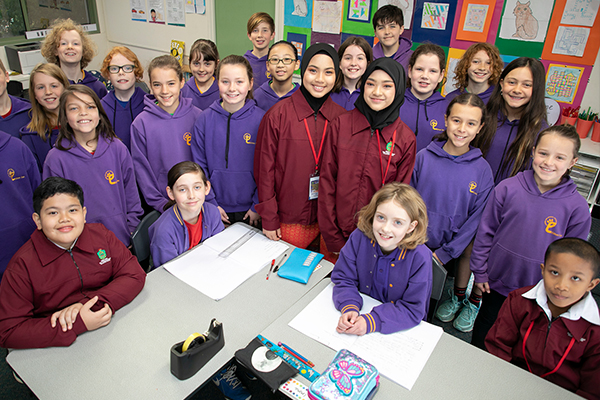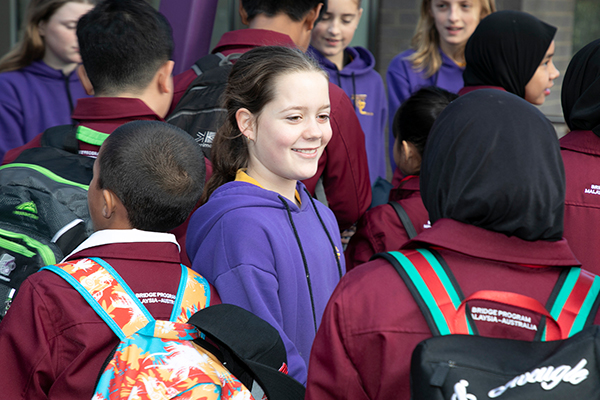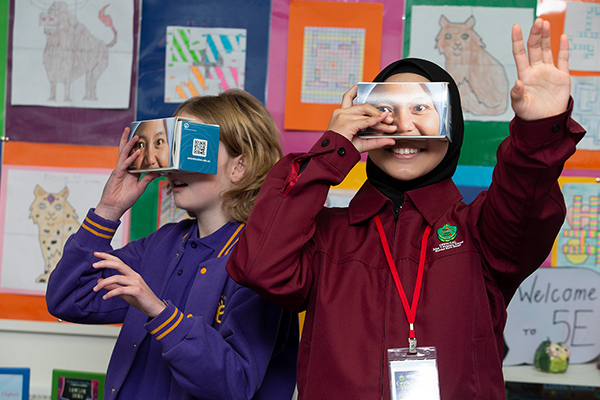by
User Not Found
| Nov 01, 2019
Hamish Curry, Executive Director, Asia Education Foundation

Australian schools need to open their classrooms to the world, to provide young Australians with the opportunity to engage with their international peers. Image: BRIDGE Program 2018
The draft National Declaration on Education Goals for the next decade was recently released with a call for feedback. This pivotal document is for all our young people, articulating the ambition of Australia’s educational goals towards 2030.
With a 10-year vision and set of aspirations to shape education policies, curriculum, and resourcing, it was always going to be a revision and update, sharing the same two interconnected goals from 2008. It was the omissions from a decade ago that I am most worried about.
Amidst a long list of the skills young Australians will need, the Declaration forgot the core driver of education: the horizon of our students’ future world.
This Declaration should have been a great opportunity to show vision and outline where our nation’s educational future lies. Instead there are vague promises that “we will ensure we place young Australians at the centre of our education system as they navigate their learning and write their own story.”
The draft Declaration has little reference to the world we are educating our students for. It is in Australia’s interest that a National Declaration on Education Goals states clearly the need to equip all young Australians with the knowledge and capabilities to engage with the world – particularly our own region, now known as the Indo-Pacific.

Image: Eltham East Primary School, Victoria welcoming a delegation from their BRIDGE partner school.
The process of this Declaration began with a round table earlier this year of education representatives across the country and across sectors. While it was disappointing that AEF was not invited to this initial roundtable, the subsequent process resulted in 158 submissions from around Australia. Here at AEF, we crafted a submission which called for “a new National Declaration to significantly strengthen the reality that young Australians’ future success has never been so dependent on their proficiency to navigate a rapidly changing world where the Asia region continues to grow in geo-strategic power.” Learning within and about the contemporary world should be of key importance to a culturally diverse country like Australia, surrounded by countries that are also incredibly diverse. Our strength in education should emphasise how interconnected we are to the world and our region, and our ability to learn from a variety of contexts and cultures.
In the 2008 Declaration, there was momentum and goals around “the need to nurture an appreciation of and respect for social, cultural and religious diversity, and a sense of global citizenship.” Perhaps then it is disappointing to see the 2019 study on Speak Out Against Racism (SOAR) by ANU where "East Asian students reported the highest rate of insults or name calling on the basis of their background at 44 percent".
We need to do more for intercultural learning than naming countries, eating Asian food, or celebrating Harmony Day. If we are to address negative stereotypes and prejudice in education and society, we have a responsibility to equip our young people with greater skills in empathy and respect; our world needs it.

Students using VR devices in the classroom. Image: BRIDGE program 2018
As part of strategies to address this in our submission to the new Declaration we argued for emphasis on “intercultural communication including languages, cross cultural teamwork and problem solving and access to global knowledge including from Asian societies that can expand creativity for all students.”
But the word ‘intercultural’ appears nowhere in the draft National Declaration.
In 2019 there is still no national data on student participation in languages to inform evidence-based education policy. The last time national data on Asian languages participation from F-10 was collected was in 2011. According to data from ACARA, the number of Year 12 students studying languages has barely moved beyond 10% in the last decade; the lowest of any learning area.
Baseline data about what Australian school students know and understand about Asia has never been collected to monitor the implementation of the Australian Curriculum – including the General Capabilities and Cross-curriculum. How does this make sense when we have such great opportunities - and challenges - to harness and address in the next decade with the governments, markets, and people who are our closest neighbours and who increasingly make up our rich culturally diverse society?
Perhaps then it is no surprise that Australia withdrew from the 2018 PISA test component on Global Competence. I have just returned from an APEC Future Education Forum in Seoul, South Korea, where the absence of many Western nations in the 18 nations out of 80 that did engage with the PISA Global Competence test was noted. At the Forum I witnessed just how ambitious our regional neighbours are in creating world-class education systems by setting national priorities for the retaining and retraining of their teacher workforce; pushing for student agency, as well as seeking to collaborate widely. This South Korean video on their country’s aspirations for their students in 2030 is a great example. These priorities match well with the ambitions of AEF in how we equip educators, enable young people, and engage advocacy to build a better future.
If we are to set better horizons, we need to be braver about measuring and monitoring what is valued and what makes us human.
In 2008, the National Declaration on Educational Goals for Every Young Australian clearly stated that “Australians need to become ‘Asia literate’, engaging and building strong relationships with Asia”. The last few years has seen a growing revolution of world class education across the Indo-Pacific, creating an even better environment for Australian educators to seize the opportunity to develop closer relationships. Not just for sister school partnerships, but around shared zest and commitment to address the educational challenges of the modern technological, economical and sociological era. If we deeply collaborate with our regional neighbours, we will likely set our vision beyond just the horizons within individual schools and sectors.
And if our vision grows, what our students ‘see’ changes.
Buried on page 5 in the new Draft Declaration is perhaps its most relevant, albeit brief, statement, calling for young Australians who “are informed and responsible global and local citizens who value and celebrate cultural differences, and engage in the global community, particularly with our neighbours in the Indo-Pacific.” If only the context and impact of this call were actually articulated. Dropping in words like ‘global’ and ‘world-class’ are not enough for a vision for our young people’s future.
AEF made a call for the next National Declaration to “speak to all young Australians to enable them to understand the purpose of learning and be inspired by what education enables them to achieve.”
If we fail to explain to our students, in clear language, what our ambitions are, then we have set our sights on the horizons of the adults in education rather than those who will walk towards horizons we can’t even see.
Comment